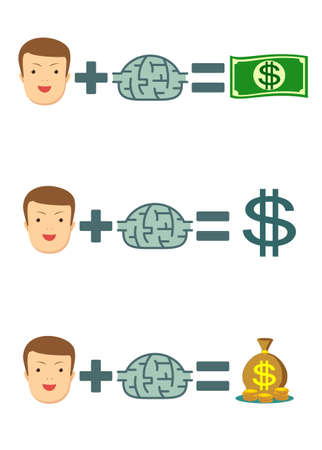1. Understanding Cash and Credit Transactions in the U.S.
Key Differences Between Cash and Credit Payments
When it comes to managing your money in the United States, it’s important to understand how cash and credit transactions work. Each method has its own advantages and challenges, and Americans often use both depending on their needs. Here’s a simple breakdown of how these payment types are used, and what they mean for personal finance management.
Common Usage in Everyday Life
| Payment Type | How Its Used | Typical Situations |
|---|---|---|
| Cash | Physical bills or coins exchanged at the time of purchase | Small purchases, tipping, local markets, some restaurants |
| Credit Card | Card is swiped or tapped; payment is made later through a monthly bill | Online shopping, large purchases, travel bookings, recurring bills |
The Impact on Personal Finance Management
Understanding when to use cash versus credit can make a big difference in how you track spending and manage your budget. In American culture, using a credit card can help build your credit score if you pay on time, but it can also lead to debt if not managed carefully. Cash payments are straightforward—once it’s spent, it’s gone—but you won’t get the same purchase protection or rewards that come with many credit cards.
Main Implications for Americans:
- Budgeting: Cash makes it easier to stick to a budget because you physically see your money leave your wallet. Credit cards offer convenience but require discipline to avoid overspending.
- Tracking: Credit card statements provide an automatic record of spending, which can be helpful for tracking expenses. With cash, you’ll need to keep receipts or write down purchases yourself.
- Cultural Habits: In the U.S., people often prefer credit cards for online shopping and larger buys due to fraud protection and rewards programs. Cash is still common for everyday small expenses.
By understanding these differences, you can make smarter choices about which payment method fits each situation best as you manage your money in the U.S.
2. Popular Apps and Tools for Tracking Cash and Credit
In the U.S., managing your money means keeping an eye on both cash and credit transactions. Thankfully, there are plenty of user-friendly budgeting apps and tools that make this process a lot easier. Here’s a look at some of the most popular options Americans use to track their spending:
Top Budgeting Apps for Americans
| App Name | Main Features | Best For |
|---|---|---|
| Mint | Links to bank accounts, credit cards, and loans; tracks spending by category; allows manual cash transaction entry | All-in-one financial overview |
| You Need A Budget (YNAB) | Helps with goal setting; focuses on giving every dollar a job; supports manual entry for cash spending | Hands-on budgeters who want control over every dollar |
| Personal Capital | Tracks both spending and investments; connects to multiple accounts; offers net worth tracking | People interested in tracking both daily expenses and long-term investments |
| PocketGuard | Links accounts to show how much is “safe to spend”; simple design; lets you add cash transactions manually | Simplifying daily budgeting without much fuss |
| Goodbudget | Envelope budgeting system; easy manual cash entry; syncs across devices for couples or families | Those who like the envelope method or want to share a budget with others |
The Importance of Tracking Both Cash and Credit Transactions
While many purchases in the U.S. happen with credit or debit cards, cash is still used for things like tips, farmers markets, or splitting bills with friends. Many apps above let you add these cash transactions manually so you get a full picture of your spending habits.
Tips for Using Apps Effectively in the U.S.
- Link Your Accounts: Most apps allow secure connections to your American banks, credit unions, and credit card accounts for automatic tracking.
- Add Cash Manually: Remember to enter any cash payments so you don’t miss out on tracking where your money really goes.
- Categorize Transactions: Assign categories (like groceries, dining out, or entertainment) to see patterns in your spending and adjust if needed.
- Set Up Alerts: Many apps send notifications if you’re close to overspending or when bills are due—super helpful in avoiding late fees!
Choosing the Right App for You
Your choice depends on how hands-on you want to be. If you prefer automation, Mint or Personal Capital could be great. If you want more control or use a lot of cash, YNAB or Goodbudget may fit better. Try a few and see which one matches your lifestyle best!

3. Best Practices for Managing Cash Purchases
Why Tracking Cash Matters in the U.S.
In a world where credit cards and digital payments are popular, it’s easy to lose track of cash spending. However, cash is still common for small purchases—like grabbing coffee, tipping at restaurants, or buying from farmers’ markets. Because these transactions don’t automatically show up on bank statements, managing cash wisely helps you stick to your budget and avoid overspending.
Easy Strategies for Recording Cash Spending
- Save Your Receipts: Always ask for a receipt when you pay with cash. Store them in a dedicated envelope or snap a quick photo with your phone.
- Use a Cash Log: Carry a small notebook or use a notes app on your smartphone to jot down every cash purchase right after it happens.
- Set a Weekly Cash Allowance: Withdraw a set amount of cash each week. When it’s gone, avoid pulling out more until the next week—this helps prevent impulse buys.
- Update Your Budget Regularly: At the end of each day or week, transfer your cash expenses into your main budget tracker—whether it’s an app, spreadsheet, or paper planner.
Simple Table: How to Track Your Cash Purchases
| Date | Description | Amount | Receipt Saved? |
|---|---|---|---|
| 06/15/2024 | Coffee Shop | $4.50 | Yes |
| 06/16/2024 | Laundry | $7.00 | No (write in log) |
| 06/17/2024 | Farmers’ Market | $15.00 | Yes (photo) |
Avoiding Common Pitfalls with Cash Transactions
- Losing Track of Small Purchases: Even $1-$5 here and there can add up quickly if not recorded.
- Mistaking ATM Withdrawals as “Spent”: Remember that taking out cash isn’t the same as spending it—track where every dollar goes after withdrawal.
- No Proof for Returns or Disputes: Without receipts, you may have trouble returning items or resolving issues with vendors.
- Treating Cash as “Free Money”: It’s easy to forget about cash once it’s out of your wallet—treat it as carefully as any other payment method.
Quick Tips for Staying Organized
- Designate a spot in your wallet or purse just for cash receipts.
- If you split expenses with roommates or friends, use apps like Splitwise to log shared cash payments.
- Review your cash logs weekly so you can spot patterns and adjust your budget if needed.
4. Tips for Managing Credit Card Payments and Debt
Keeping Track of Your Credit Card Purchases
In the U.S., using credit cards is very common for both everyday expenses and big purchases. To avoid surprises when your statement arrives, it’s important to keep track of what you’re spending. Many Americans use mobile banking apps or budgeting tools like Mint or YNAB to monitor transactions in real time. You can also save receipts or jot down purchases in a simple notebook or spreadsheet.
Popular Tools for Tracking Credit Card Spending
| Tool | Description |
|---|---|
| Mobile Banking Apps | Check your balance, recent charges, and pending payments instantly. |
| Budgeting Apps (e.g., Mint) | Automatically categorize and track spending across multiple cards. |
| Spreadsheets | Customize your own tracker with Google Sheets or Excel. |
| Pencil & Paper | A simple way to log each purchase manually if you prefer offline tracking. |
Managing Due Dates and Payments
Missing a credit card payment can lead to late fees and hurt your credit score. Set up automatic payments through your bank or credit card website so at least the minimum amount is paid on time each month. You can also set calendar reminders on your phone for extra peace of mind. Many Americans align their payment due dates with payday to make budgeting easier.
Ways to Stay On Top of Due Dates
- Enable automatic payments (for full balance or minimum due)
- Add recurring reminders to your phone calendar
- Check email alerts from your card issuer about upcoming payments
- Request a due date that fits your pay schedule (most U.S. banks allow this)
Understanding Credit Scores in the U.S.
Your credit score affects everything from loan approvals to rental applications in America. Making timely payments, keeping balances low, and avoiding maxing out cards are key habits for maintaining a good score. You can check your credit score for free through services like Credit Karma or directly from major credit bureaus once a year.
Main Factors Affecting U.S. Credit Scores
| Factor | Impact Level | Description |
|---|---|---|
| Payment History | High | Paying on time is the biggest influence on your score. |
| Credit Utilization | High | The percentage of available credit you’re using; lower is better. |
| Length of Credit History | Medium | The longer you’ve used credit, the better for your score. |
| New Credit Inquiries | Low-Medium | Opening many new accounts at once can lower your score temporarily. |
| Diversity of Accounts | Low-Medium | A mix of cards, loans, etc., helps but isn’t as important as payment history. |
Minimizing Interest and Avoiding Late Fees
If you carry a balance from month to month, interest charges can add up fast. Try to pay off your full statement balance every month to avoid paying interest entirely—this is called “grace period” in U.S. card terms. If that’s not possible, pay more than the minimum whenever you can. Watch out for penalty APRs: a single late payment can make your interest rate jump significantly.
Tactics to Reduce Costs:
- Avoid cash advances—they come with high fees and no grace period.
- If you’re struggling, call your card issuer; some offer hardship programs or let you change due dates.
- If you have multiple cards, focus on paying off those with the highest interest first (“avalanche method”).
5. Reconciling Your Transactions and Staying Organized
Why Reconciliation Matters in the U.S.
Keeping track of your money is essential, especially when you use both cash and credit cards for daily spending. In the U.S., people often juggle multiple accounts, digital wallets, and different payment methods. Reconciling your transactions helps you avoid mistakes, spot unauthorized charges, and get a clear picture of where your money goes each month.
How to Regularly Review Your Transactions
Set aside time each week or month to go through your bank statements, credit card statements, and receipts. Many Americans use budgeting apps like Mint, YNAB (You Need A Budget), or just a simple spreadsheet. Here’s a basic process to follow:
Step-by-Step Transaction Reconciliation
| Step | Description |
|---|---|
| 1. Gather Records | Collect bank/credit card statements, digital wallet reports, and cash receipts. |
| 2. Categorize Spending | Label each transaction (e.g., groceries, gas, dining out, rent). |
| 3. Compare & Check | Match your receipts and personal records with statement entries. |
| 4. Spot Errors or Fraud | Look for unfamiliar charges or duplicate payments and contact your bank if needed. |
| 5. Update Your Budget | Add any missing expenses and adjust category limits as needed. |
Categorizing Cash vs. Credit Transactions
Cash purchases can be harder to track since they don’t automatically show up on statements. Get in the habit of saving receipts or jotting down notes in your phone right after you pay with cash. For credit cards, most banks in the U.S. provide detailed online statements that break down spending by category—take advantage of these features!
Example: Simple Tracking Table
| Date | Description | Type (Cash/Credit) | Amount ($) |
|---|---|---|---|
| 06/01/2024 | Coffee Shop | Cash | $5.00 |
| 06/02/2024 | Gas Station | Credit Card | $40.00 |
Tips for Staying Organized in the U.S.
- Use mobile banking apps to check balances daily.
- Create digital folders for e-receipts and photos of paper receipts.
- If you split bills with friends (like at restaurants), use popular apps like Venmo or Zelle for easy tracking.
The key to financial peace of mind is consistency—make reviewing and reconciling your transactions a regular habit so you always know where you stand financially.

